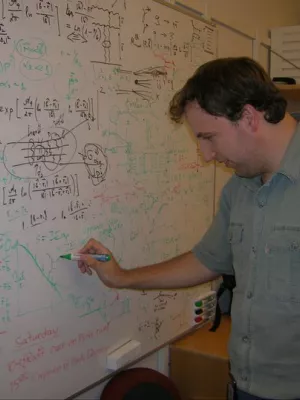
Roman Pasechnik
Senior lecturer

Reviving trinification models through an E6 -extended supersymmetric GUT
Author
Summary, in English
We present a supersymmetric (SUSY) model based on trinification [SU(3)]3 and family SU(3)F symmetries embedded into a maximal subgroup of E8, where the sectors of light Higgs bosons and leptons are unified into a single chiral supermultiplet. The common origin of gauge trinification and of the family symmetry from E8 separates the model from other trinification-based GUTs, as it protects, in particular, the Standard Model fermions from gaining mass until the electroweak symmetry is broken. Furthermore, it allows us to break the trinification symmetry via vacuum expectation values in SU(3)-adjoint scalars down to a left-right symmetric theory. Simultaneously, it ensures the unification of the gauge and Yukawa couplings as well as proton stability. Although the low-energy regime (e.g., mass hierarchies in the scalar sector determined by a soft SUSY-breaking mechanism) is yet to be established, these features are one key to revive the once very popular trinification-based GUTs.
Department/s
- Department of Astronomy and Theoretical Physics - Has been reorganised
Publishing year
2017-04-01
Language
English
Publication/Series
Physical Review D - Particles, Fields, Gravitation and Cosmology
Volume
95
Issue
7
Document type
Journal article
Publisher
American Physical Society
Topic
- Subatomic Physics
Status
Published
Project
- Model building and pheno
ISBN/ISSN/Other
- ISSN: 2470-0010

